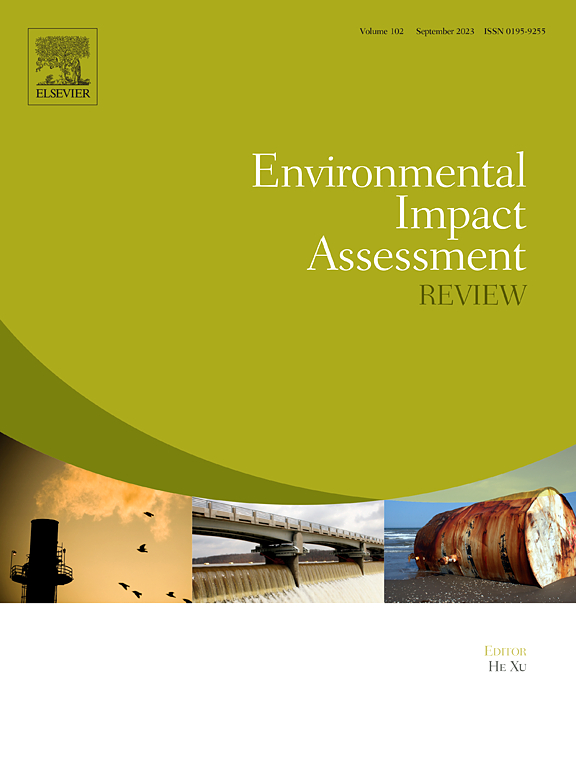城市景观格局对街区地表温度的影响:来自中国 38 个大城市的证据
IF 9.8
1区 社会学
Q1 ENVIRONMENTAL STUDIES
引用次数: 0
摘要
现有文献在研究地表温度(LST)与城市景观格局(ULPs)之间的关系方面做出了大量努力。然而,在不同城市进行的地表温度研究结果并不一致,导致人们对城市景观格局的意义和重要性产生担忧。此外,人们对垂直 ULP 及其热效应在空间和时间上的变化关注不够。本研究对中国 38 个特大城市不同季节的街道街区进行比较分析,利用地理开放数据找出 ULP 与 LST 联系的规律性和差异性。研究以康森的城镇景观分析框架为基础,从城市规划格局(CPP)、建筑格局(BP)和土地利用格局(LUP)三个方面,使用大量广泛使用的新型二维和三维空间指标对ULP进行量化。研究结果表明,考虑城市规划模式的整体或特定方面可以加强对 LST 空间变化的解释,尤其是在夏季和春季。LUP的改善程度最高,其次是CPP和BP。无论季节和城市如何,建筑布局、建筑密集区、绿地、水体、海拔、坡度和道路密度都是最有影响力的ULP指标,而街区大小、天空视角系数、建筑密度和建筑高度的影响有限或非预期。此外,我们的研究结果表明,ULP 与 LST 之间存在时空变化关系,一些 ULP 指标在不同季节或城市对 LST 有双面影响。我们建议,优化建筑布局和土地利用构成,增加绿蓝空间和城市遮阳带,可能比改变城市密度更有效地缓解城市热岛效应。本文章由计算机程序翻译,如有差异,请以英文原文为准。
The impact of urban landscape patterns on land surface temperature at the street block level: Evidence from 38 big Chinese cities
Existing literature has made substantial efforts to examine the relationships between land surface temperature (LST) and urban landscape patterns (ULPs). However, the inconsistent findings from studies on LST conducted in different cities lead to concerns about the significance and importance of ULPs. Moreover, insufficient attention has been paid to vertical ULPs and variations in their thermal effects over space and time. This study conducts a comparative analysis in 38 Chinese megacities across different seasons at the street block level to identify regularities and differences in ULP-LST linkages using geographical open data. The study quantifies ULPs with an amount of widely used and new two- and three-dimensional spatial metrics from three aspects—city plan patterns (CPPs), building patterns (BPs), and land use patterns (LUPs)—based on Conzen's townscape analysis framework. Results reveal that the consideration of overall or specific aspects of ULPs can enhance the explanation of spatial variations in LST, particularly during summer and spring. The improvements are highest for LUPs, followed by CPPs and BPs. Regardless of seasons and cities, building arrangement, built-up areas, greens, water bodies, elevation, slope, and road density are the most influential ULP indicators, whereas block size, sky view factor, building density, and building height present limited or unintended effects. Furthermore, our results indicate the time- and place-varying relationships between ULPs and LST, and some ULP indicators demonstrate two-sided effects on LST across different seasons or cities. We suggest that optimizing building layout and land use composition to increase green-blue spaces and urban shading zones may be more effective for alleviating the urban heat island effect than changing urban density.
求助全文
通过发布文献求助,成功后即可免费获取论文全文。
去求助
来源期刊

Environmental Impact Assessment Review
ENVIRONMENTAL STUDIES-
CiteScore
12.60
自引率
10.10%
发文量
200
审稿时长
33 days
期刊介绍:
Environmental Impact Assessment Review is an interdisciplinary journal that serves a global audience of practitioners, policymakers, and academics involved in assessing the environmental impact of policies, projects, processes, and products. The journal focuses on innovative theory and practice in environmental impact assessment (EIA). Papers are expected to present innovative ideas, be topical, and coherent. The journal emphasizes concepts, methods, techniques, approaches, and systems related to EIA theory and practice.
 求助内容:
求助内容: 应助结果提醒方式:
应助结果提醒方式:


